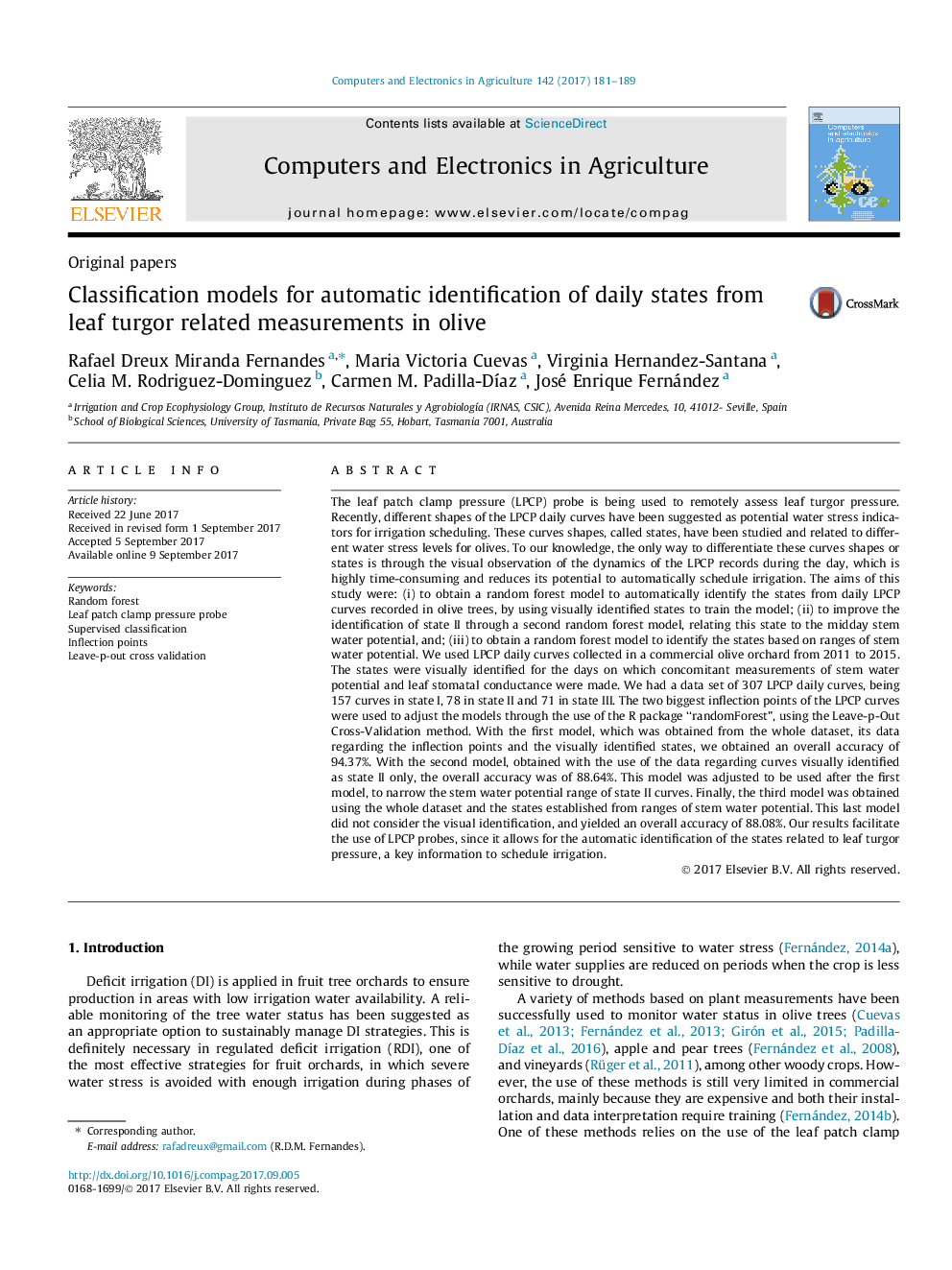| کد مقاله | کد نشریه | سال انتشار | مقاله انگلیسی | نسخه تمام متن |
|---|---|---|---|---|
| 6458669 | 1361745 | 2017 | 9 صفحه PDF | دانلود رایگان |
- Leaf patch clamp pressure (LPCP) probes are used to schedule irrigation.
- Leaf turgor related states are usually identified from visual observation of LPCP records.
- We built models to automatically identify leaf turgor related states from LPCP records.
- Model validation was made with data from a commercial super high density olive orchard.
The leaf patch clamp pressure (LPCP) probe is being used to remotely assess leaf turgor pressure. Recently, different shapes of the LPCP daily curves have been suggested as potential water stress indicators for irrigation scheduling. These curves shapes, called states, have been studied and related to different water stress levels for olives. To our knowledge, the only way to differentiate these curves shapes or states is through the visual observation of the dynamics of the LPCP records during the day, which is highly time-consuming and reduces its potential to automatically schedule irrigation. The aims of this study were: (i) to obtain a random forest model to automatically identify the states from daily LPCP curves recorded in olive trees, by using visually identified states to train the model; (ii) to improve the identification of state II through a second random forest model, relating this state to the midday stem water potential, and; (iii) to obtain a random forest model to identify the states based on ranges of stem water potential. We used LPCP daily curves collected in a commercial olive orchard from 2011 to 2015. The states were visually identified for the days on which concomitant measurements of stem water potential and leaf stomatal conductance were made. We had a data set of 307 LPCP daily curves, being 157 curves in state I, 78 in state II and 71 in state III. The two biggest inflection points of the LPCP curves were used to adjust the models through the use of the R package “randomForest”, using the Leave-p-Out Cross-Validation method. With the first model, which was obtained from the whole dataset, its data regarding the inflection points and the visually identified states, we obtained an overall accuracy of 94.37%. With the second model, obtained with the use of the data regarding curves visually identified as state II only, the overall accuracy was of 88.64%. This model was adjusted to be used after the first model, to narrow the stem water potential range of state II curves. Finally, the third model was obtained using the whole dataset and the states established from ranges of stem water potential. This last model did not consider the visual identification, and yielded an overall accuracy of 88.08%. Our results facilitate the use of LPCP probes, since it allows for the automatic identification of the states related to leaf turgor pressure, a key information to schedule irrigation.
Journal: Computers and Electronics in Agriculture - Volume 142, Part A, November 2017, Pages 181-189
